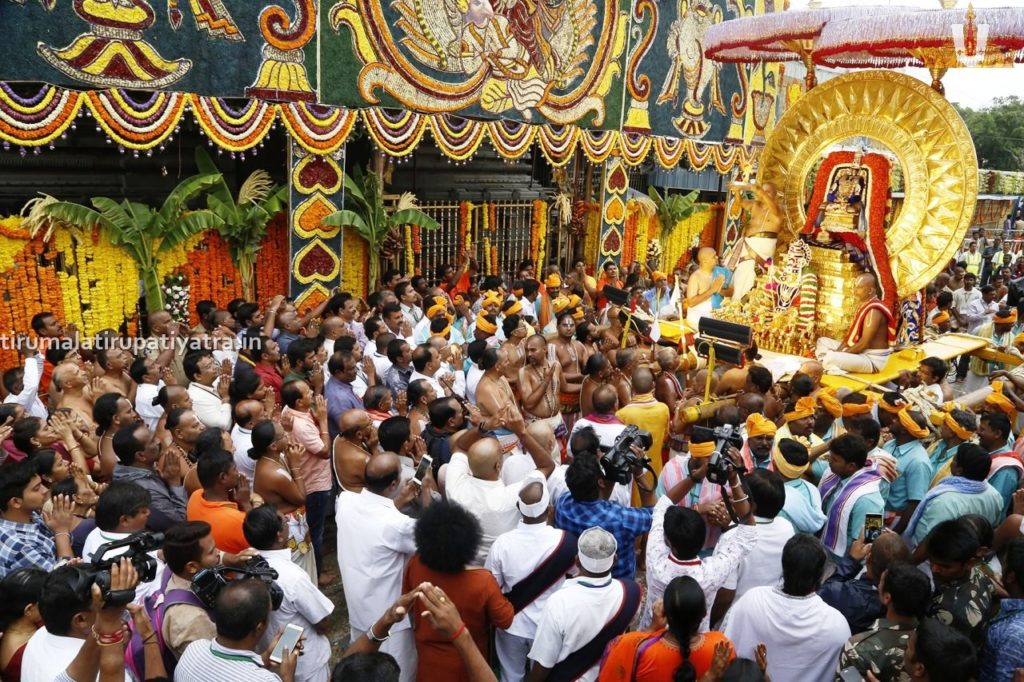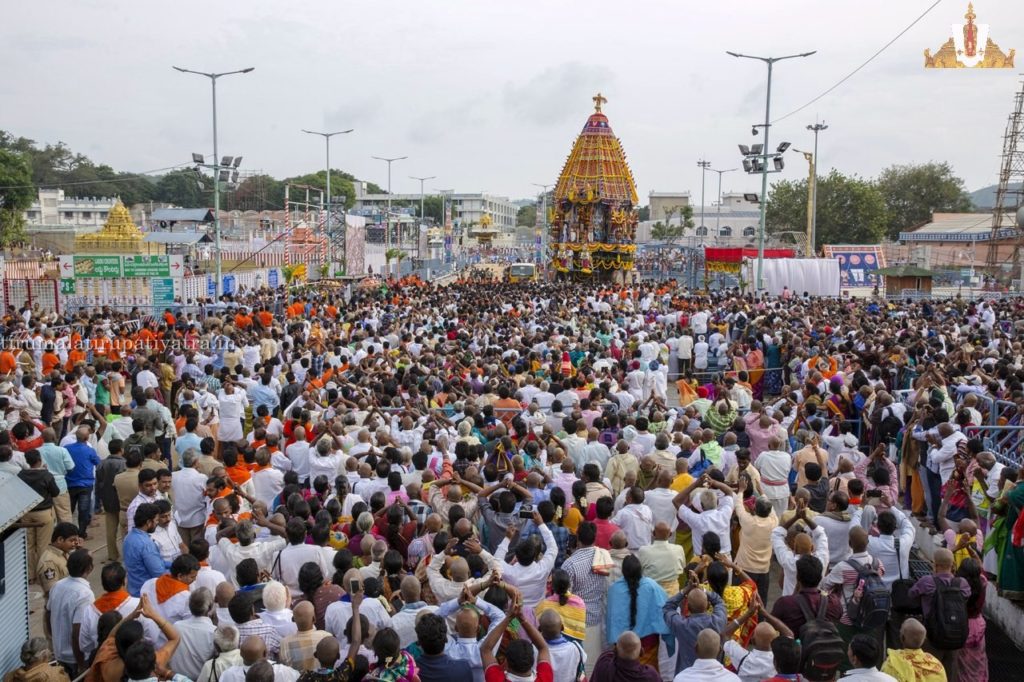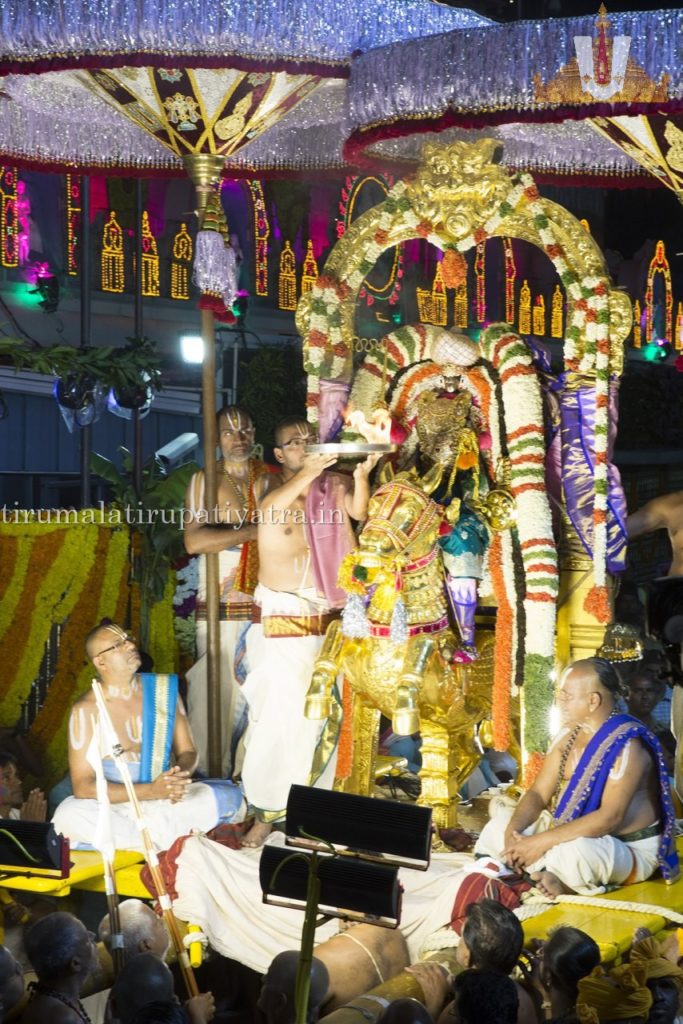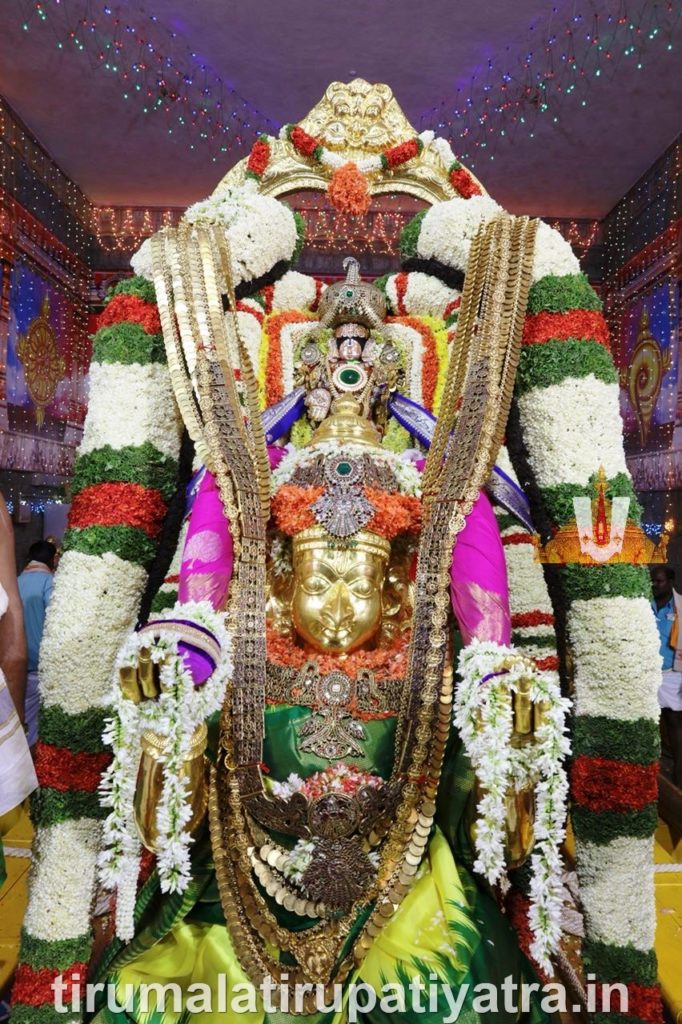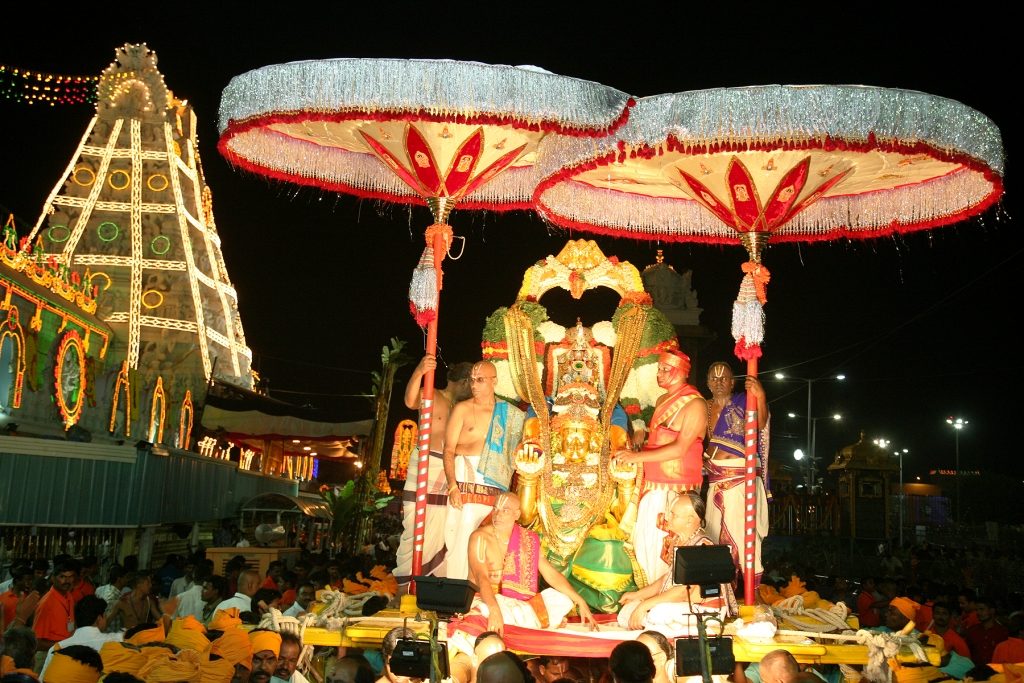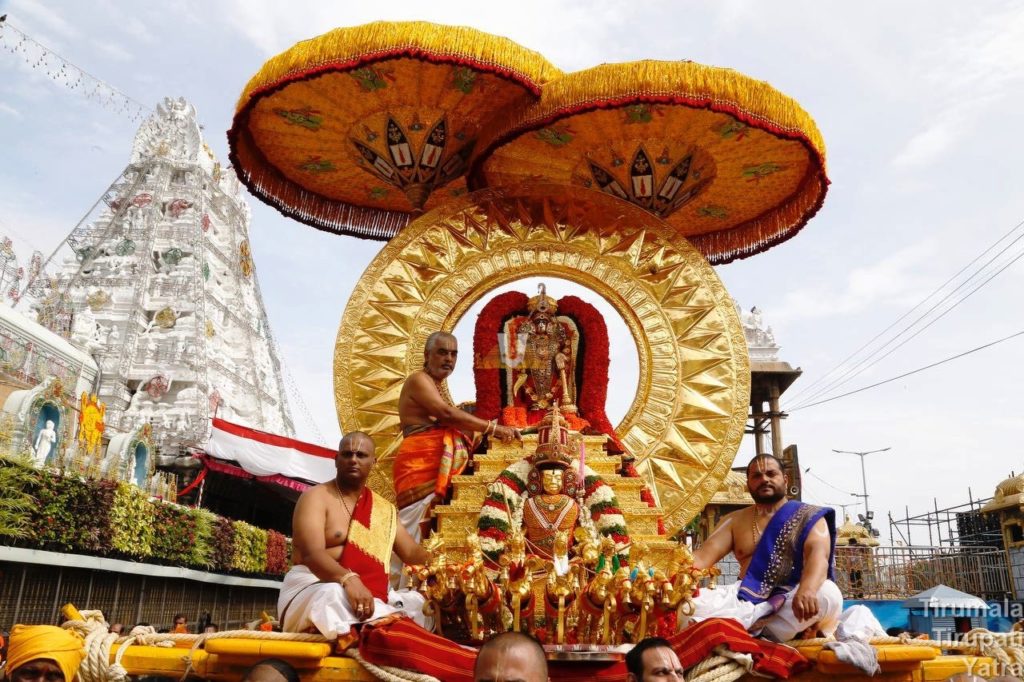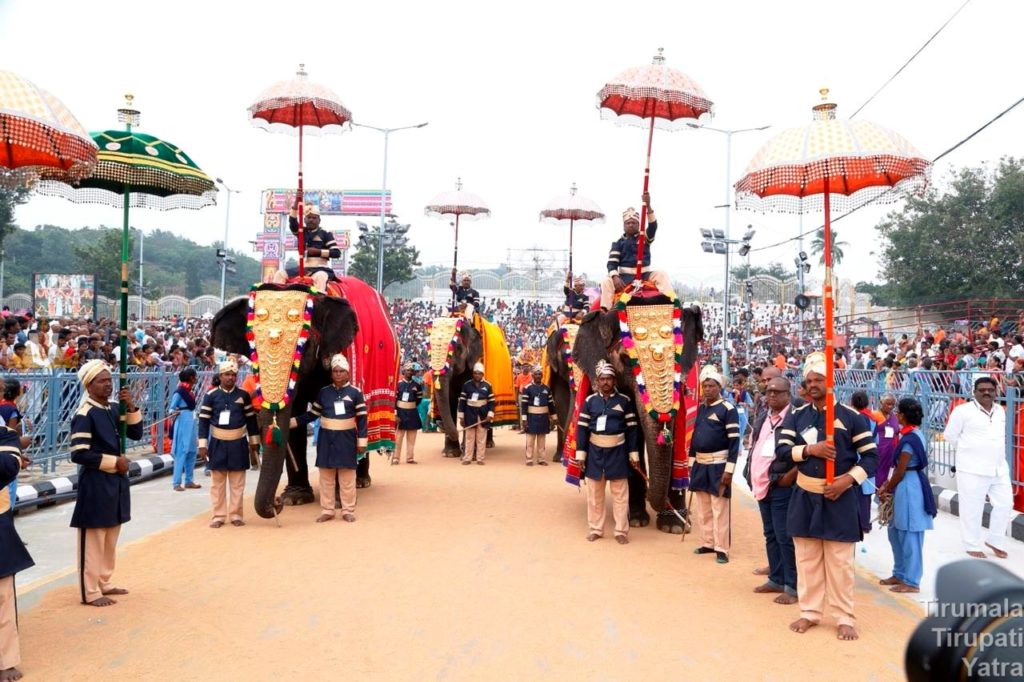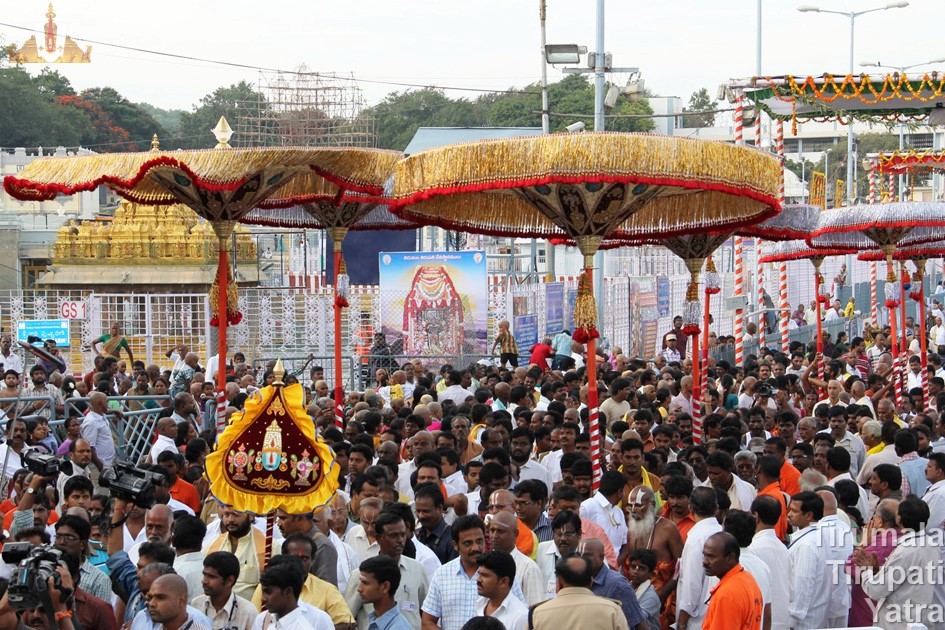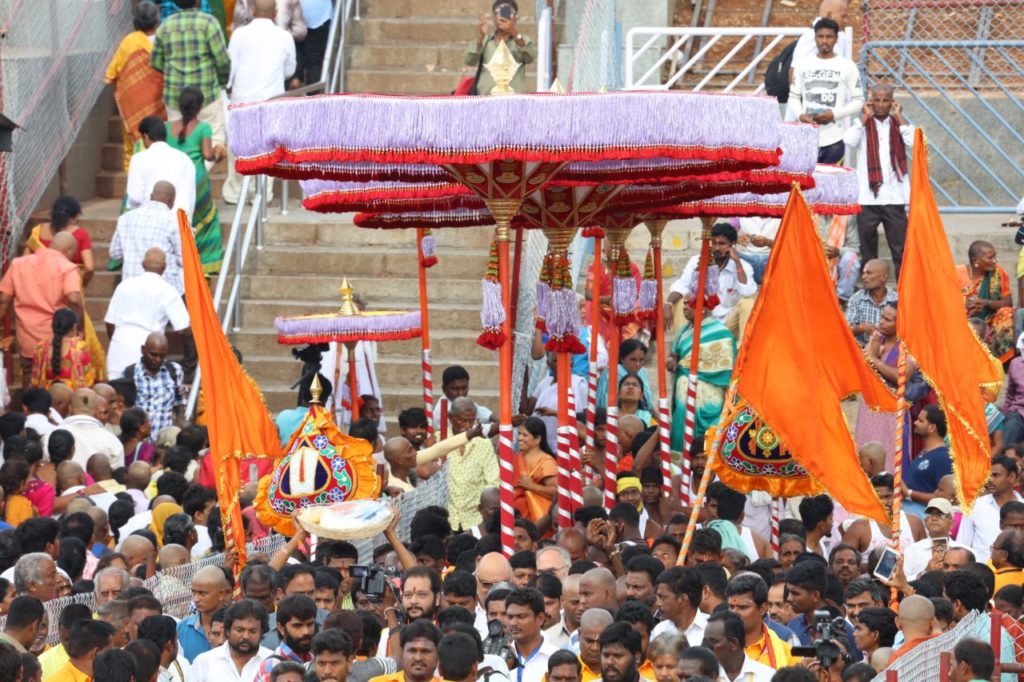Surya Prabha Vahanam There is one ceremony or the other almost daily for Lord Venkateswara manifest on Tirumala. Different ceremonies are conducted on a grand scale for the Lord with different time frames— daily, fortnightly, monthly, and yearly. Of them, special mention may be made of annual Brahmotsavas. Devotees go on raptures witnessing the Lord Read More
Category: Brahmotsavam
Once a year, the Brahmotsavams are celebrated, In the procession, the Lord takes a majestically reclined posture on the various ‘vahanams’
Chandra Prabha Vahanam 2018
Chandra Prabha Vahanam There is one ceremony or the other almost daily for Lord Venkateswara manifest on Tirumala. Different ceremonies are conducted on a grand scale for the Lord with different time frames— daily, fortnightly, monthly, and yearly. Of them, special mention may be made of annual Brahmotsavas. Devotees go on raptures witnessing the Lord Read More
Rathotsavam – Car Festival 2018
Rathotsavam There is one ceremony or the other almost daily for Lord Venkateswara manifest on Tirumala. Different ceremonies are conducted on a grand scale for the Lord with different time frames— daily, fortnightly, monthly, and yearly. Of them, special mention may be made of annual Brahmotsavas. Devotees go on raptures witnessing the Lord on different Read More
Aswa Vahana Seva 2018
There is one ceremony or the other almost daily for Lord Venkateswara manifest on Tirumala. Different ceremonies are conducted on a grand scale for the Lord with different time frames— daily, fortnightly, monthly, and yearly. Of them, special mention may be made of annual Brahmotsavas. Devotees go on raptures witnessing the Lord on different carriages Read More
BRAHMOTSAVAMS IN TIRUMALA
“Venkatadri Samam sthanam Brahmande Nasthi Kinchana” Annual Brahmotsavams There is no sacred place in the Brahmanda like ‘Venkatadri’. Out of all pilgrim centers throughout the world, ‘Venkatadri’ is being considered as a unique place. Since the advent of Lord Venkateswara as ‘Swayambhu’ in Tirumala, the ‘Annual Brahmotsavams’ are being celebrated for nine days in the Read More
Importance of Brahmotsavams
Brahmotsavam God Srinivasa was the cynosure of every eye, strolling on the streets of Tirumala with Sridevi and Bhudevi. One day he would ride a horse, comparable to Ucchaisrava, on another on an elephant like Airavata, on yet another day Adisesha or Garuda, the personification of the Vedas. He showered his blessings on all the Read More
Brahmotsavam – Nine day Festival
Navamam Navaratnamcha Brahma cha Kamalasanah NidhiGrahascha Khandamcha Randhro Bhavascha Labdhakah Navamam, Navaratnam, Brahma, Kamalasana, Nidhih, Grahah, Khanda, Randhra, Bhava and Labdhakah-these ten are the names of number nine. In the Dictionary of Symbols, the name Brahma indicates nine Brahmas and thereby, the number nine. The festival celebrated by Brahma in the name of Sri Venkateswara went Read More
Definition of Brahmotsavam
Brahmotsavam Brahma the creator, with the sun then transiting Virgo (Kanya), the month of Aswayuja as per the Chandramana (the Lunar Calender), fixing Avabhritha (Chakrasnana or the holy dip of the disc) in star sravana, the star of Srimannarayana’s incarnation, having invited divine sages like Vaikhanasa, Bhrigu, and Maricha, as its priests (ritviks), on Suklapaksha Read More
Making of Umbrellas for Garuda Seva
Making of Umbrellas The celebration of offering umbrellas on the day of Garudotsavam has been in practice for over 180 years. This worship was started by Sri Venkata Krishnamma Setty. It has been in practice traditionally for a long time. For the preparation of umbrellas, nearly a month’s duration is required. Usually, before two months, Read More
Offering of Umbrellas – Garuda Seva
Significance of Offering Umbrellas Garuda Seva during annual Brahmotsvams at Tirumala is the most celebrated and significant seva, rendered to Lord Venkateswara in the form of (an archamurthi), who descended from ‘Vaikunta’ (Lord Mahavishnu) to protect the devotees from the sins and sufferings of Kaliyuga. During the Garuda Seva, the most ceremonious thing is offering Read More
